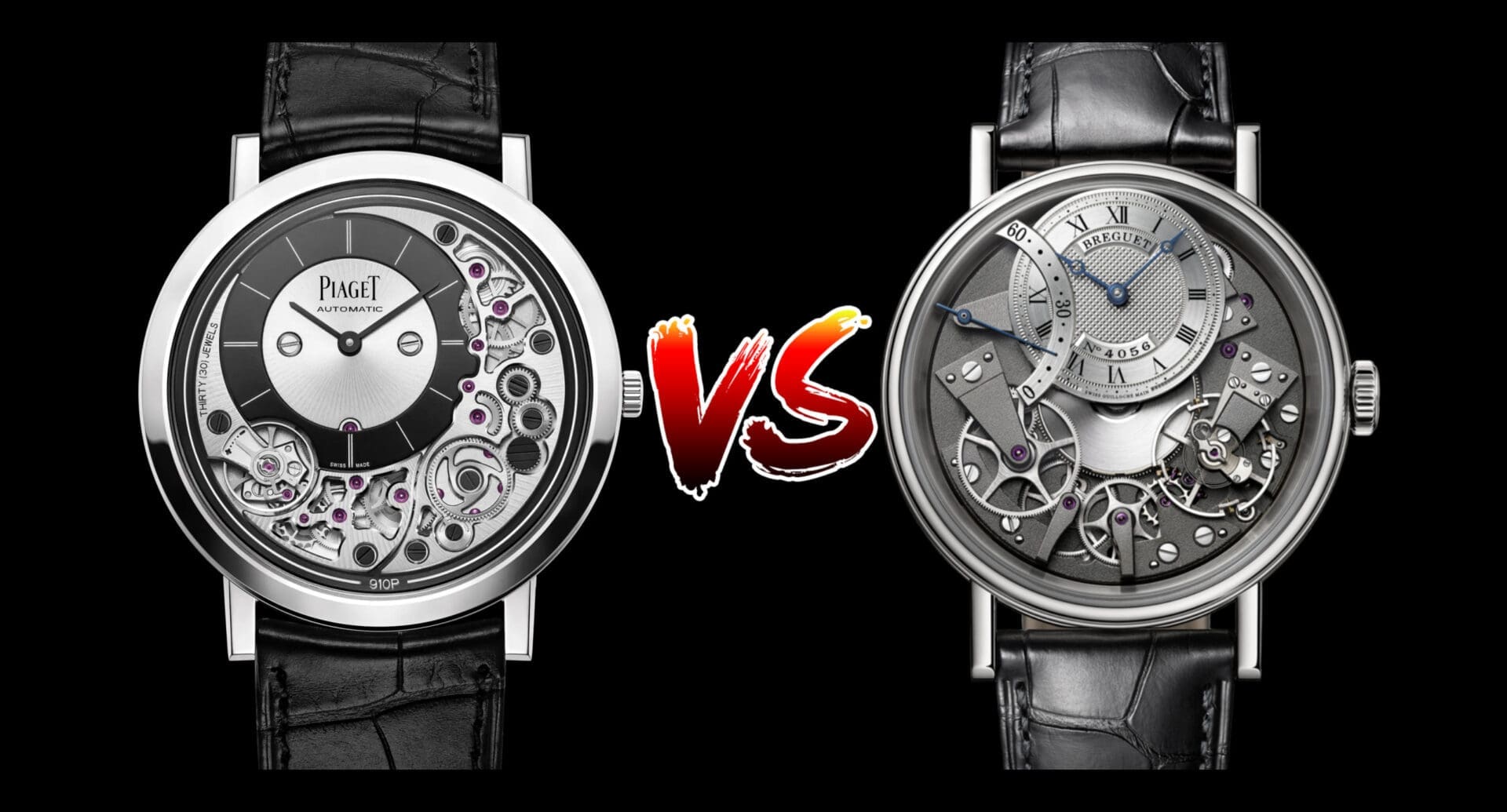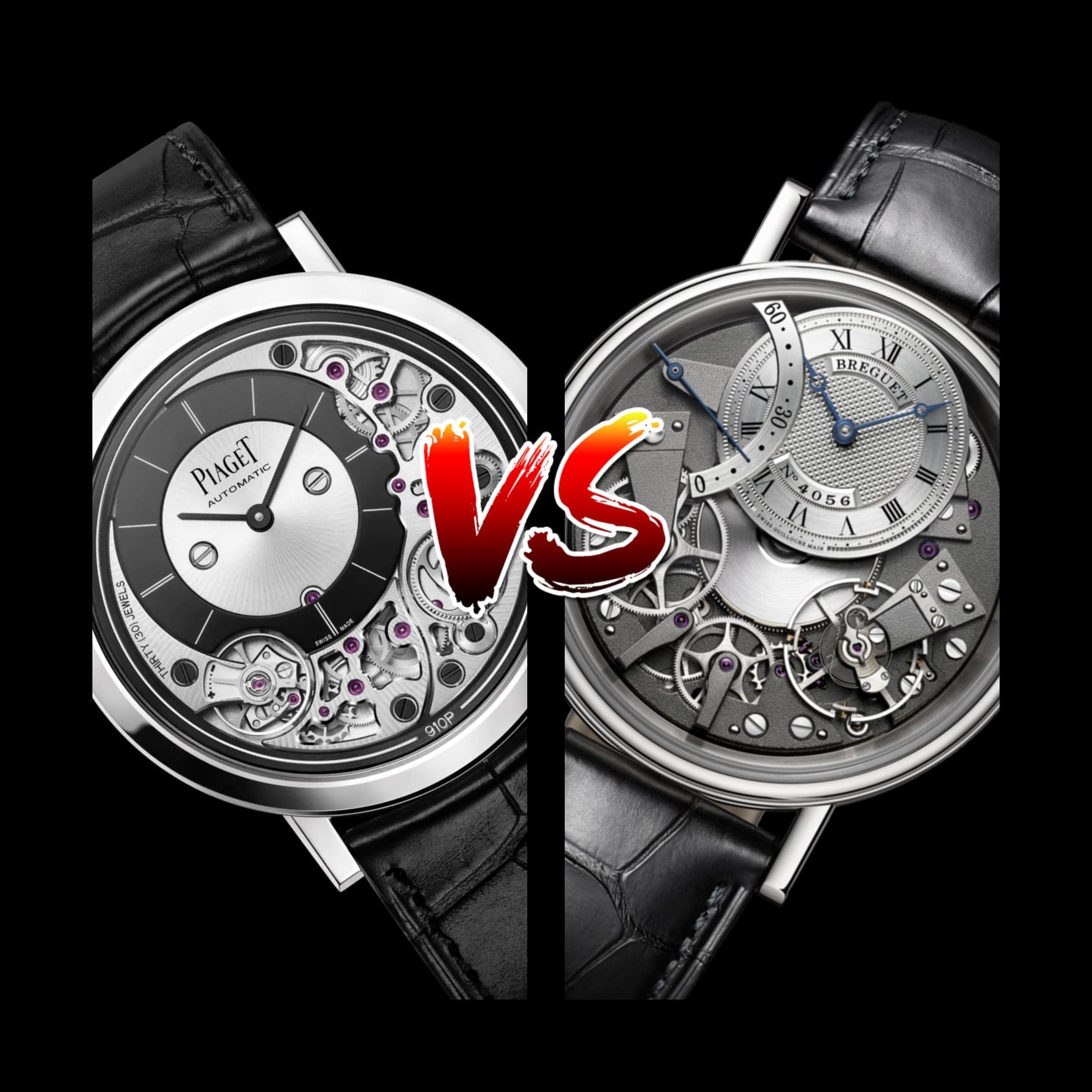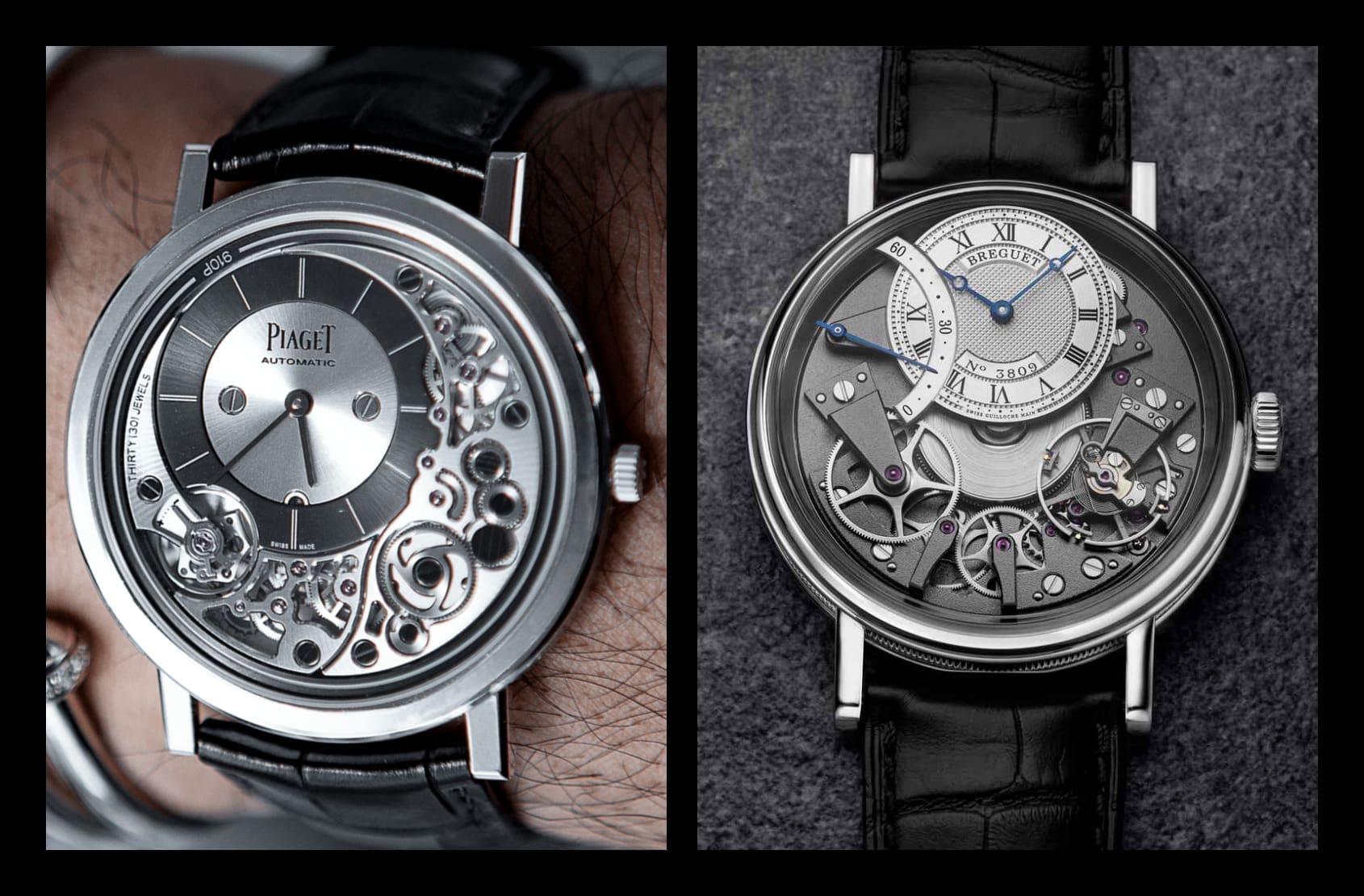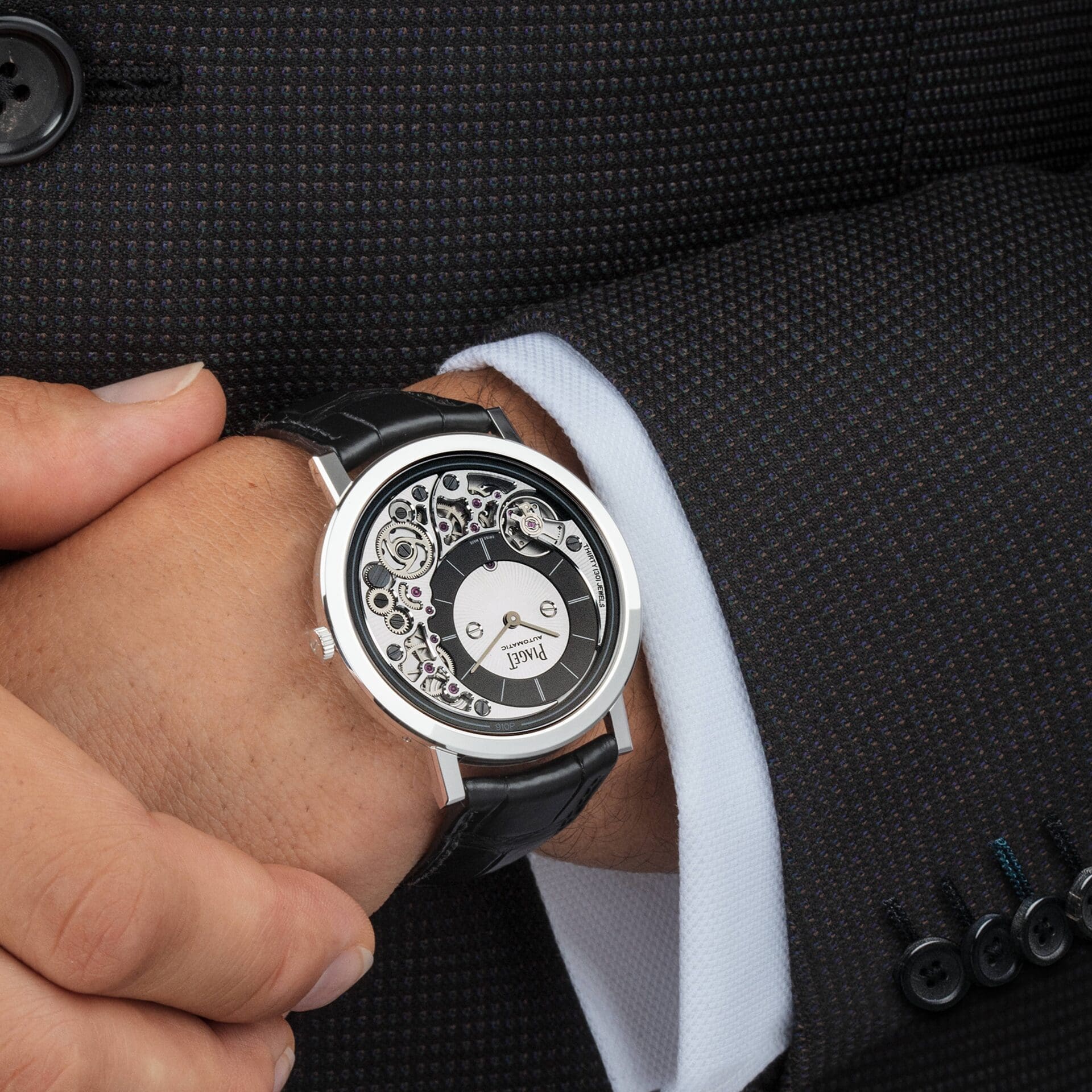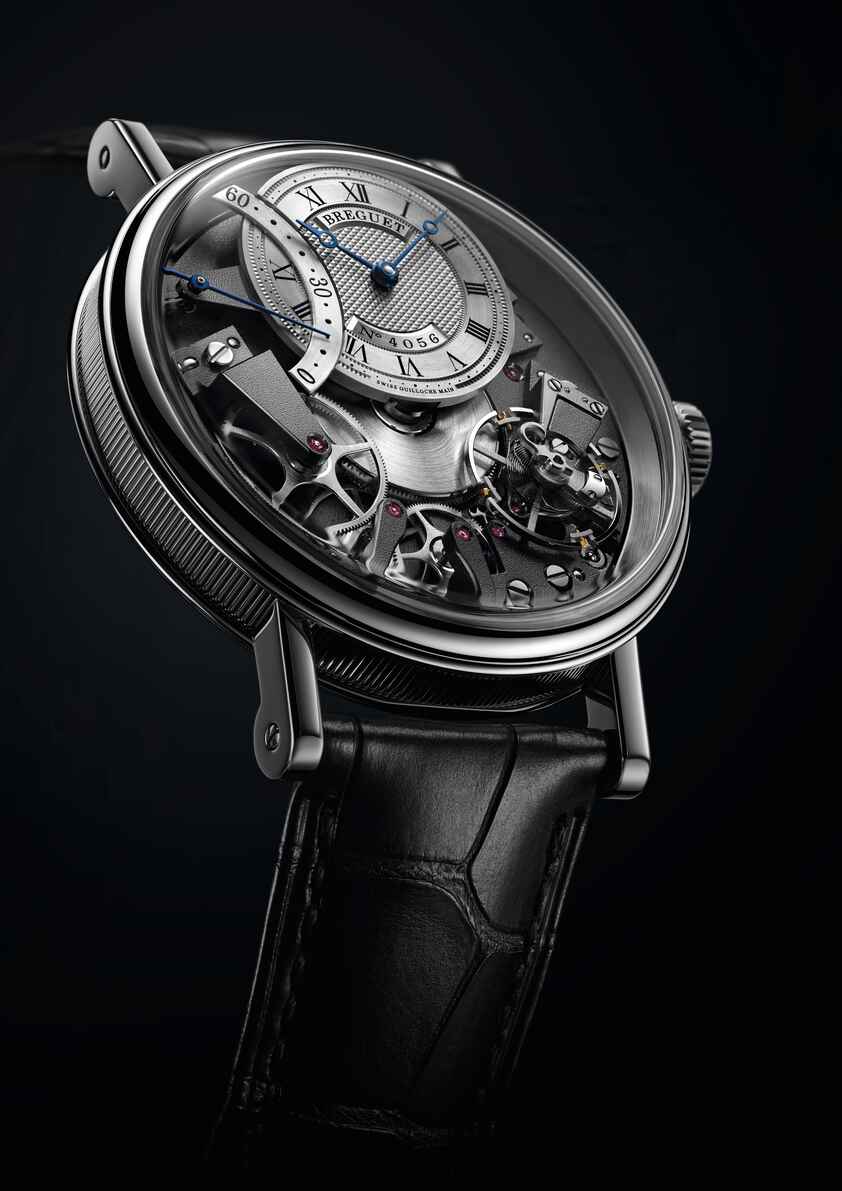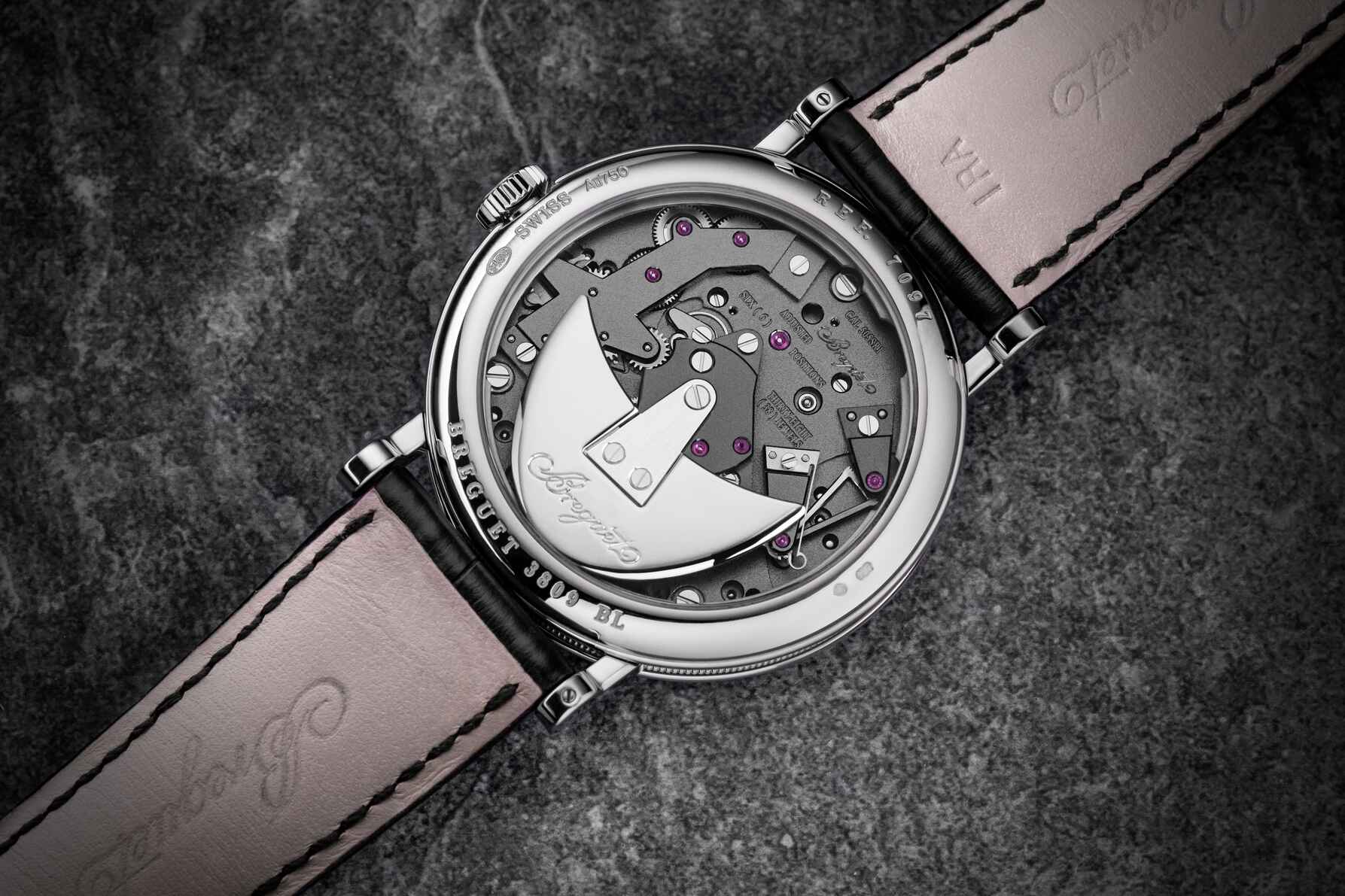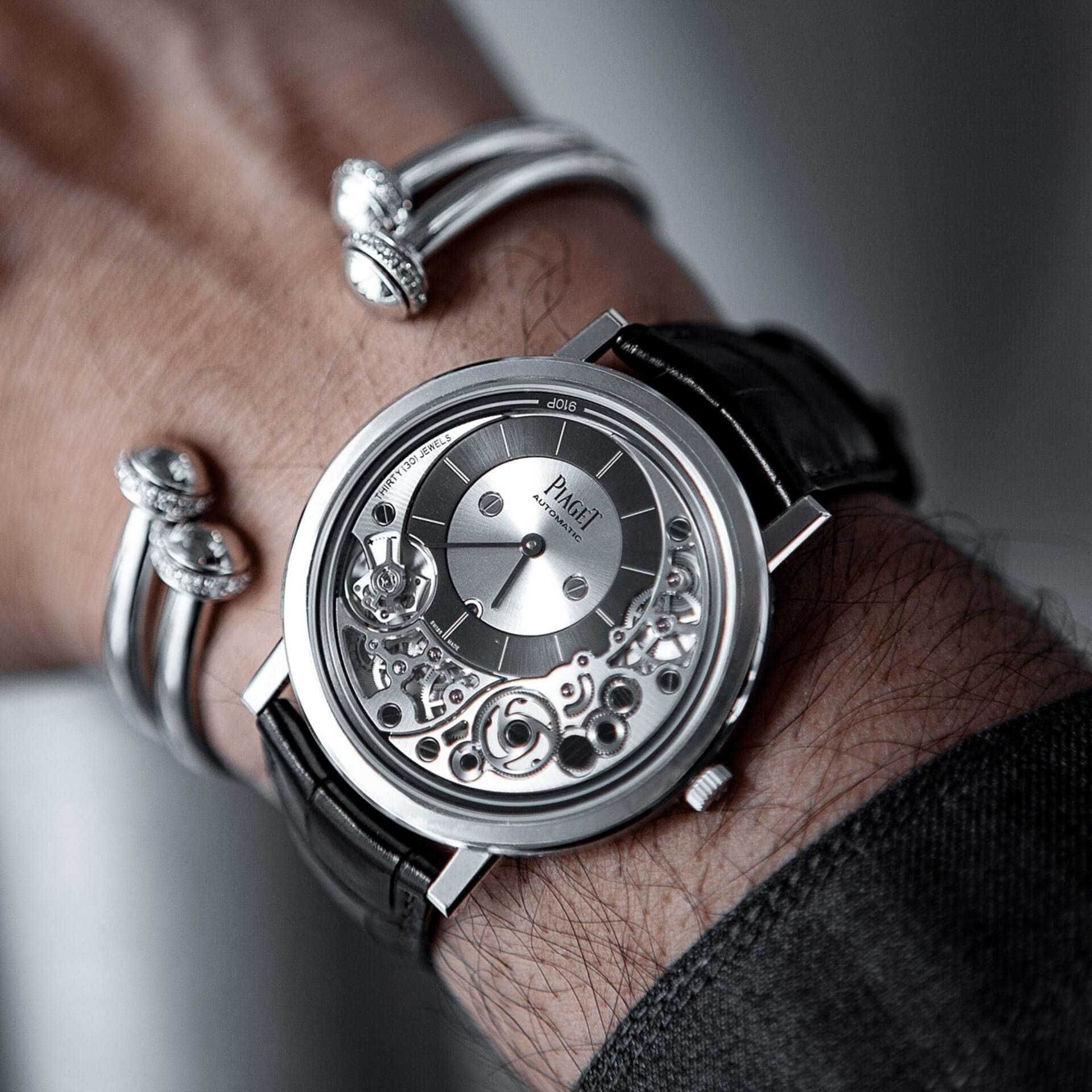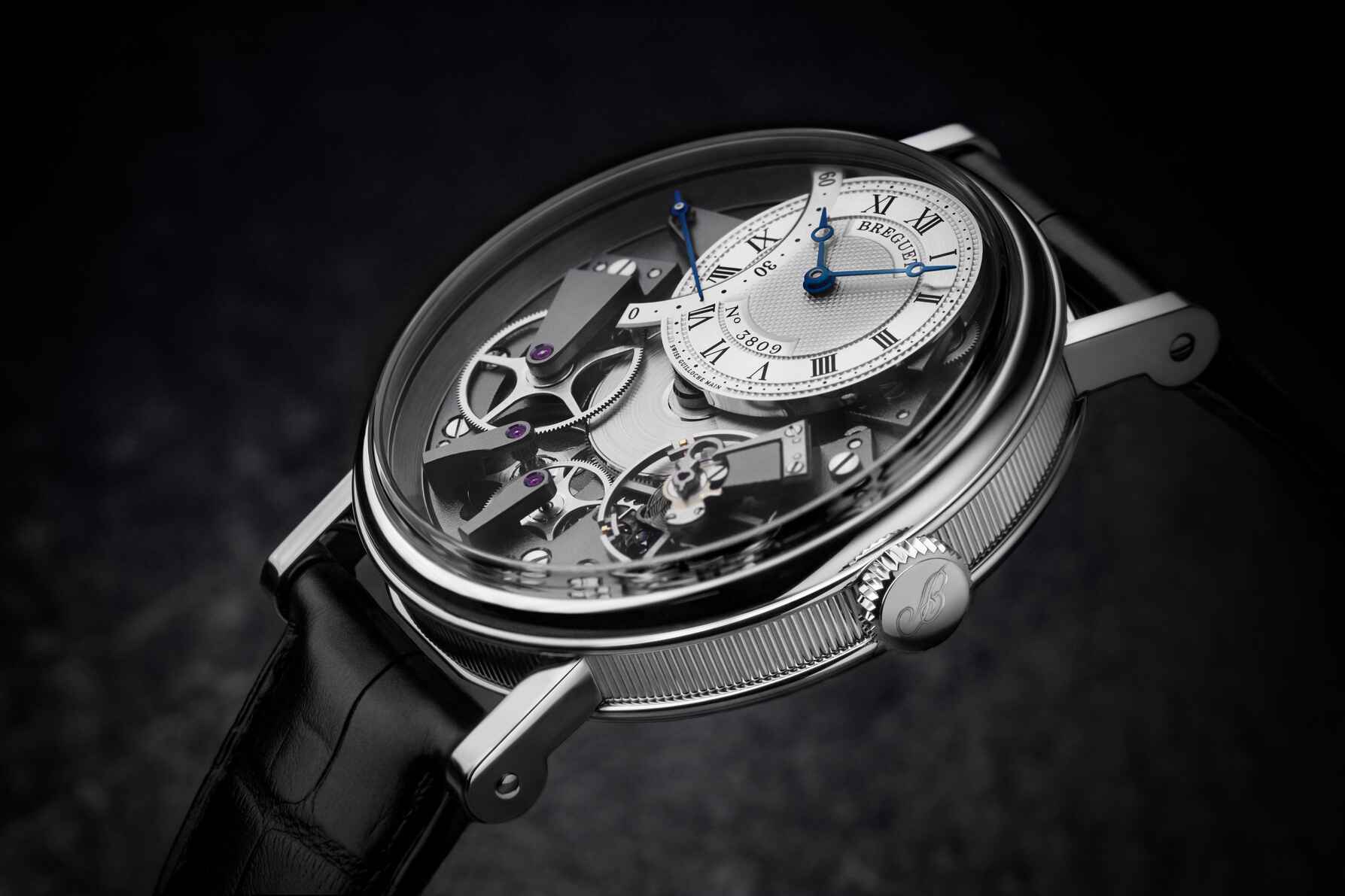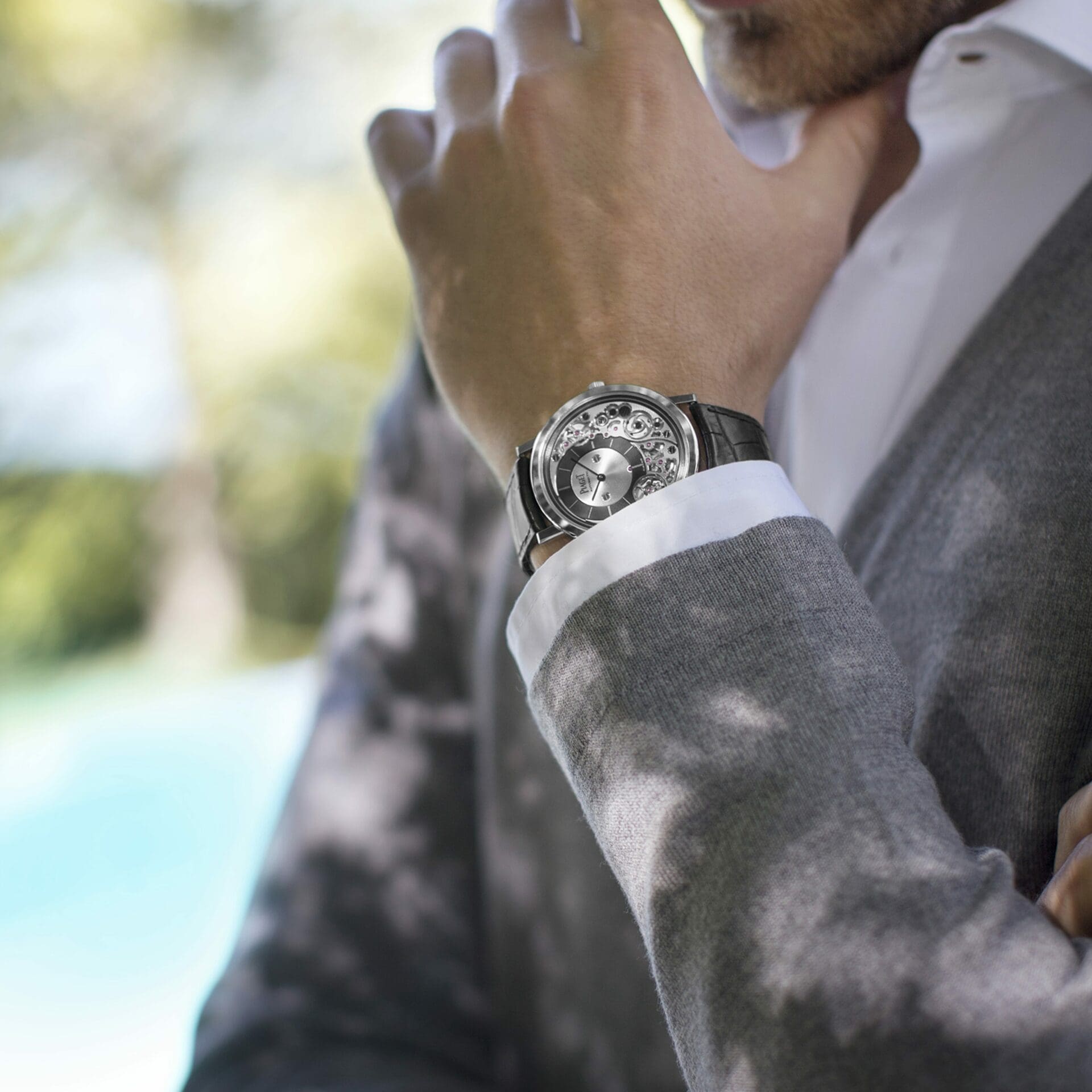VERSUS: The Piaget Altiplano Ultimate 910P & Breguet Tradition Automatique Seconde Rétrograde 7097
Zach BlassWelcome to Versus. This new column is as simple as it sounds. Each week a member of the Time+Tide team will be tasked with pitting two comparable watches against each other head to head, highlighting why they are worthy of being compared, the different strengths each distinctly carry, and the reasons to choose one over the other. Whether aesthetic rivals, or two visually different pieces that would serve a similar purpose or function within a collection, the two contenders must be able to go pound for pound. No blowouts, or first round knockouts here. That would not be very interesting. So, for our first Versus matchup we have the Piaget Altiplano Ultimate 910P & Breguet Tradition Automatique Seconde Rétrograde 7097.
| Brand | Piaget | Breguet |
| Model | Altiplano Ultimate 910P | Tradition Automatique Seconde Rétrograde 7097 |
| Case Dimensions | 41mm (D) x 4.3mm (T) | 40mm (D) x 11.8mm (T) x 49.6mm (L2L) |
| Case Material | 18K white gold | 18K white gold |
| Water Resistance | 20m | 30m |
| Dial | Off-centred dial | Off-centered dial in silvered gold, engine-turned by hand |
| Crystal | Sapphire crystal | Sapphire crystal and caseback |
| Strap | Black alligator leather strap | Black alligator leather strap |
| Movement | In-house automatic 910P | In-house automatic 505 SR1 |
| Power Reserve | 48 hours | 50 hours |
| Functions | Hours, minutes | Hours, minutes, retrograde seconds |
| Availability | Now | Now |
| Price | US$31,300 | US$35,400 |
Common ground: Movements front and centre
On the surface, the two watches strike the same chord visually. Both the 910P and 7097 allow their owners to fully appreciate the movement within the watch while worn. Very little, if anything, is hidden. This is due to the fact that each utilise off-centered sub-dials to display the hours and minutes. The remaining real estate lets the heartbeat of the watch shine, the full gear train and lively balance in full view on each watch. That being said, while the watches, perhaps, share a similar visual objective they each take vastly different approaches.
Where each stands apart: Cutting edge thin or tradition at its finest
The Piaget Altiplano Ultimate 910P is nearly three times thinner than the Breguet 7097. Once the thinnest automatic wristwatch on the market, the 910P achieves its ultra-thin profile through a design that turns the caseback of the watch into the main-plate of the movement. This means the 910P does not have an exhibition caseback like the Breguet 7097. With such a thin stature, the case finish is not very elaborate – strictly mirror-polished in appearance. The bezel is thin, allowing the dial to be larger which, in turn, makes the watch seem larger than its is. Sure, 41mm is definitely on the larger side for a dress watch. But, it is worth noting that its 38mm 900P hand-wound sibling, which omits the usage of the peripheral rotor seen on the 910P, has an extremely compact lug-to-lug measurement of 41.9mm. While I do not have the exact lug-to-lug measurement for the 910P, it is fair to assume it in line proportionally with the 900P.
The finish of the 910P movement is very modern in feel. The incredibly thin bridges of the caliber are finely chamfered at their edges, with a radially grained finish on their top-side. At the risk of dismissing the quality of Swiss watchmaking at play here, the 910P is a very chic and fashion-friendly watch. In my days of working for Piaget in-store, the 900P and 910P were my favourite to wear as they seamlessly slid beneath the cuff of my shirt with unparalleled ease.
The Breguet 7097, while 1mm smaller in diameter, is a much larger watch. The lug-to-lug span is nearly 50mm, which for some may be a deterrent when considering dress watch options. Its 11.8mm thick case is certainly bulkier than the 910P, but by no means is it too chunky on the wrist. With the extra case metal, the 7097 is able to have a greater expression of decoration as it is actually hand-made. When you look at the caseband, you will find handsome coining executed throughout the perimeter and each of the four lugs are welded and then hand-finished to remove the evidence of the meticulous operation. The larger profile of the watch also allows the watch and movement to be a bit more robust than the 910P, with 10 metres more water-resistance and larger movement components such as a larger balance wheel more resistant to shock. It is also worth noting the escapement utilises silicon components to resist against magnetism, and the strap and its buckle are secured by screws versus springbars – which conveys Breguet’s willingness to go the extra mile in regard to details and function. It also exhibits Breguet’s ability to tastefully weave modern innovation into their watches without removing their traditional signatures.
The darknening of the bridges modernises its aesthetic, but the finish front and back is indicative of the best of traditional watchmaking. Structurally it appears very similar to the pocket watches made by Breguet himself centuries prior, with a more rustic frosting applied throughout that is complimented by thin hand-executed chamfers. Also, as Breguet is widely known for, the 7097’s off-centered sub-dial is comprised of a silvered solid gold disc that is engine-turned by hand on a rose lathe – no corner cutting stamping here. You also have the signature Breguet handset, so widely loved that other brands continue to imitate it to this day. Lastly, in its larger size the 7097’s automatic 505 SR1 offers something the 910P does not: running seconds. And, not only do you have a running seconds display, you get a retrograde seconds display. Starting from zero, the blued second hand will creep its way up the semi-circular arc and, upon reaching 60, will then flip back to zero to repeat the process. It further enlivens an already lively dial, and offers a refreshing and, perhaps, more visually rewarding display of the running seconds.
The verdict
The case for the Piaget Altiplano Ultimate 910P: More compact lug-to-lug, ultra-thin 4.3mm case, modern aesthetic. I personally feel this watch is the better option for those who are less concerned with watch-nerdery and prioritise a handsome and sleek aesthetic that still displays a high level of watchmaking know-how.
The case for the Breguet Tradition Automatique Seconde Rétrograde 7097: More robust and finer decorated movement, silvered gold engine-turned sub-dial by hand, more traditional aesthetic. Irrefutably, the Tradition exhibits far more hands-craftsmanship and has an aesthetic those who truly appreciate watchmaking, love or hate the watch itself, must respect. While a time machine, visually speaking, in its finish and architecture, notes like the darkening of the frosted bridges present the past in a present way. Its larger size may make it less sleek, but it does make the watch less delicate than the 910P. With a larger balance, outfitted with anti-magnetic components, the movement itself is more equipped to handles the casual stresses of daily office wear.
My pick: The Tradition 7097 is definitely technically stronger, with more elaborate movement technology and hand-executed decorations. So, from a watchmaking perspective, I would have to say the 7097 is the winner of this battle. While the 910P is a truly innovative product only a mast manufacture of ultra-thin could realise, the 7097 definitely offers more traditional watchmaking horology nuts crave for the dollar. But, due to my smaller wrist, admiration for ultra-thin watchmaking, and my Piaget past as a watch specialist, I am personally partial to the 910P. Therefore, of the two, the 910P is the one I would want on my wrist.




